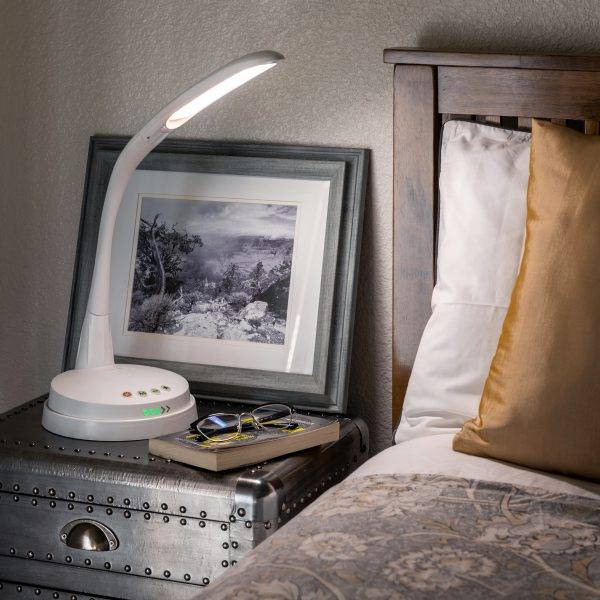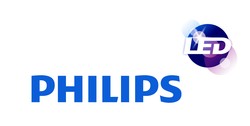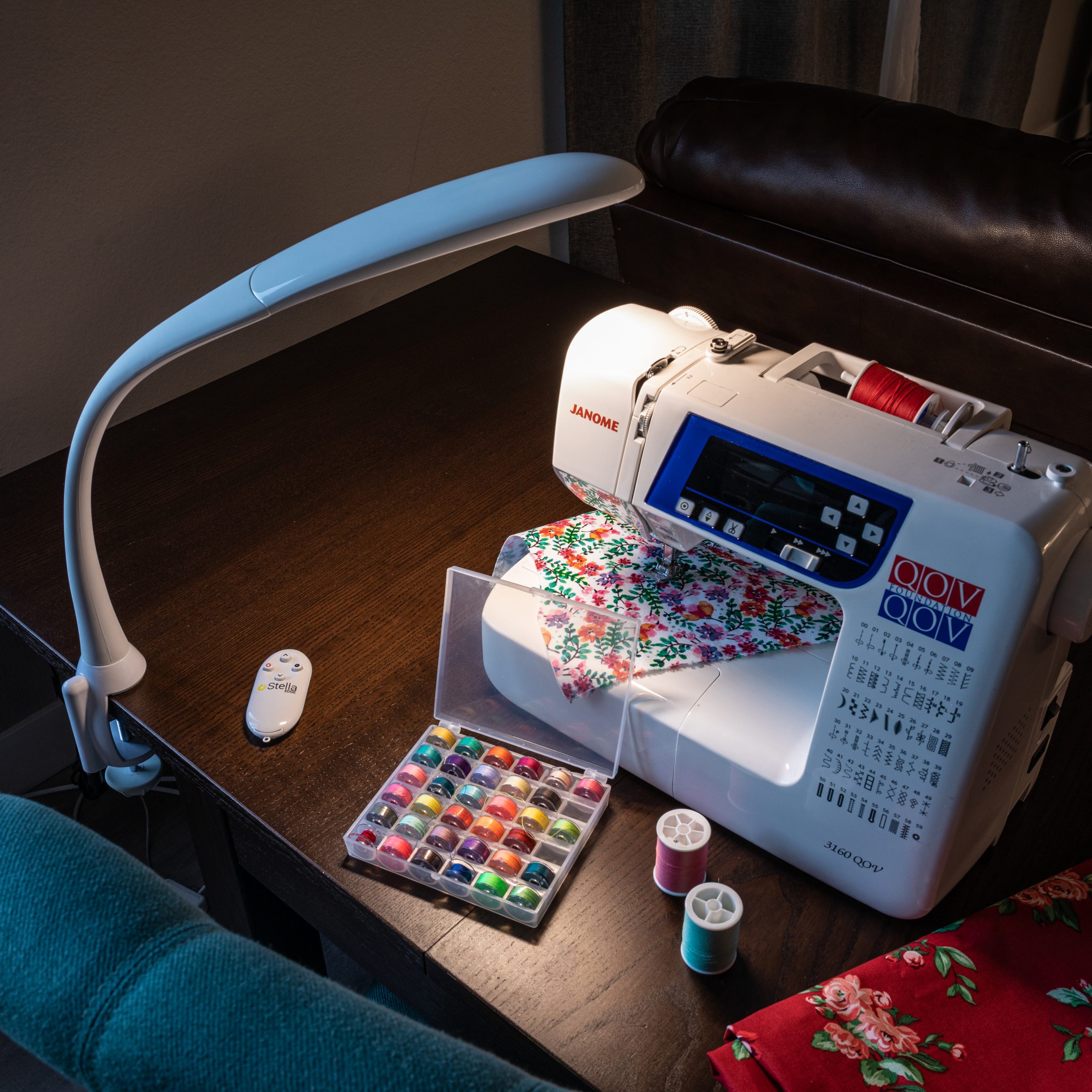Stella Light – What Sets it Apart?
With the brand new Stella GO wireless LED desk lamp hitting the market, we’re taking a deep dive into what makes a Stella light unique.
Contents:
- Stella lights – A bird’s eye view
- Key features
- LEDs vs. regular bulbs
- Stella LED lamps vs. the competition
- Final thoughts & pricing
Stella Light Options
Stella Lighting’s 4 main lamps each offer the same adjustable LED lighting technology in various designs, depending on your needs.
Floor Lamp
With a fully adjustable neck and pole, the Stella SKY TWO LED Floor Lamp can be used for task lighting or to illuminate an entire room.
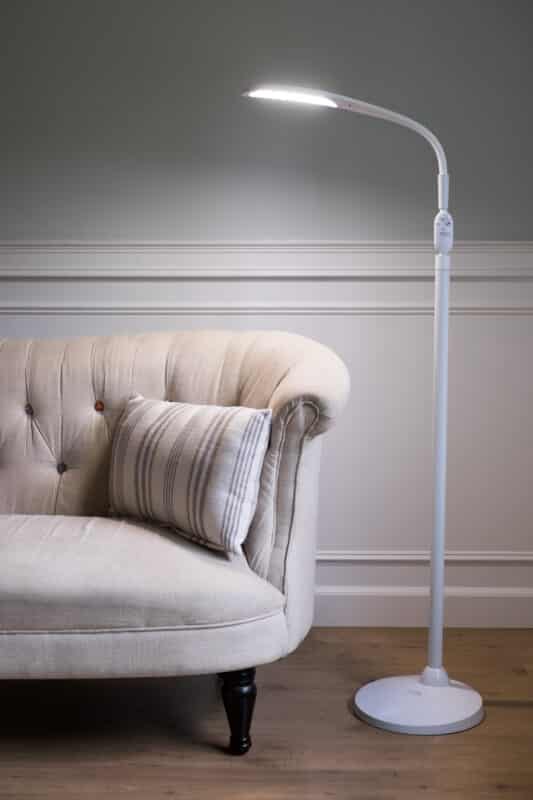
Task Lamps
Stella GO
The newest in the Stella line, Stella GO is a portable, wireless LED task lamp that lasts up to 11 hours on a single charge. Its wireless charging pad uses Qi, the latest in wireless charging technology, for a safe, reliable charging experience. The charging pad can also be used to charge compatible cell phones.

The new Stella GO rechargeable desk lamp with wireless charging pad
Stella TWO LED Task Lamp
The Stella TWO LED Task Lamp is like a miniature version of the Stella SKY TWO. It’s a dedicated task lamp for virtually any task, including reading, working, cooking, doing paperwork, knitting, crafting, etc.
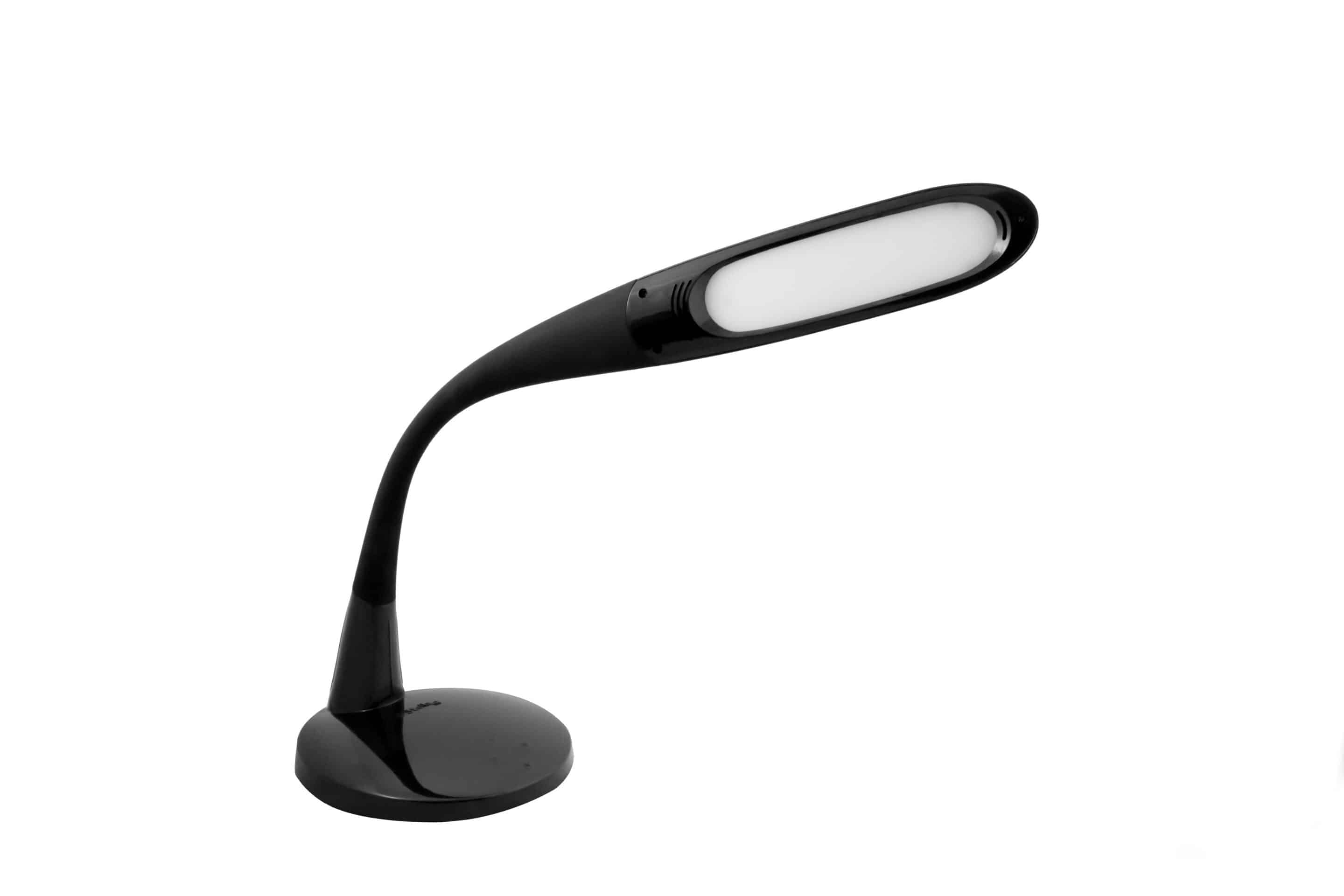
Stella EDGE
Stella EDGE is similar to the Stella TWO, except for the base. Instead of a weighted base, the EDGE has a clamp that attaches to any surface between .5″ and 2.5″ thick, making it a solid portable option for various tasks around the home or office.
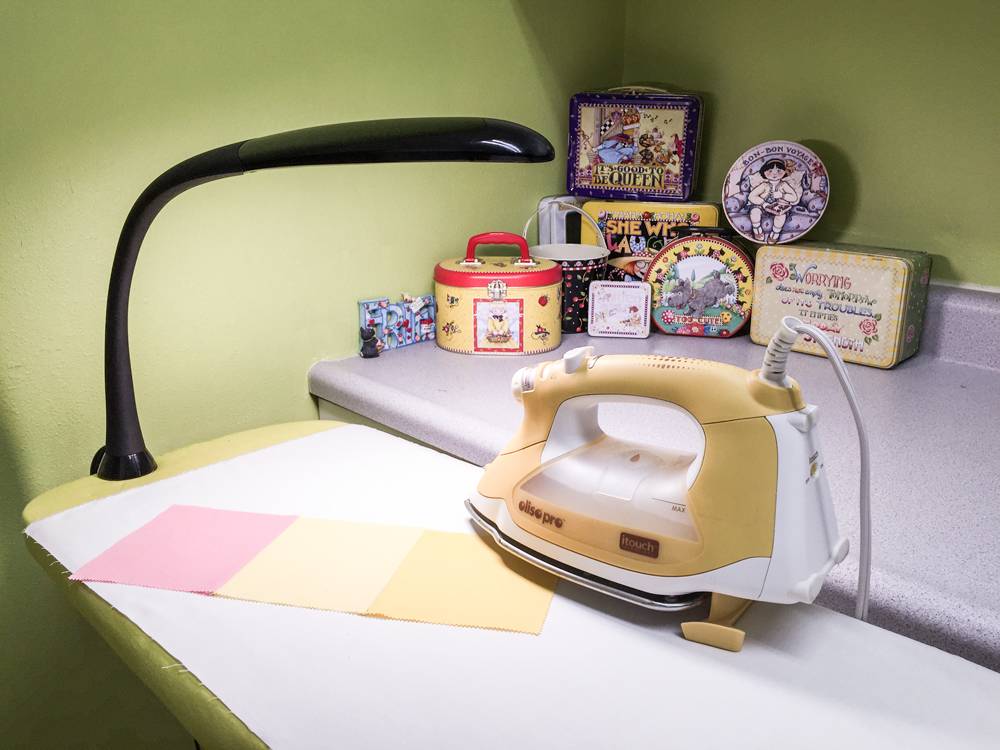
Key Features of a Stella Light
We love that each Stella light boasts the same key features resulting in high-quality, customizable, and reliable lighting for your workspace.
LEDs
Stella utilizes state-of-the-art, surface-mount, Philips Lumiled high performance LEDs, the brightest LEDs on the marketplace.
Surface-mount LEDs are among the newest, most cutting edge developments in LED technology. They are smaller than regular LEDs and not bubble-shaped but flat.
Stella light adjustability
It’s important to keep in mind that Stella lamps are adjustable in 3 ways: light brightness, color, and position.
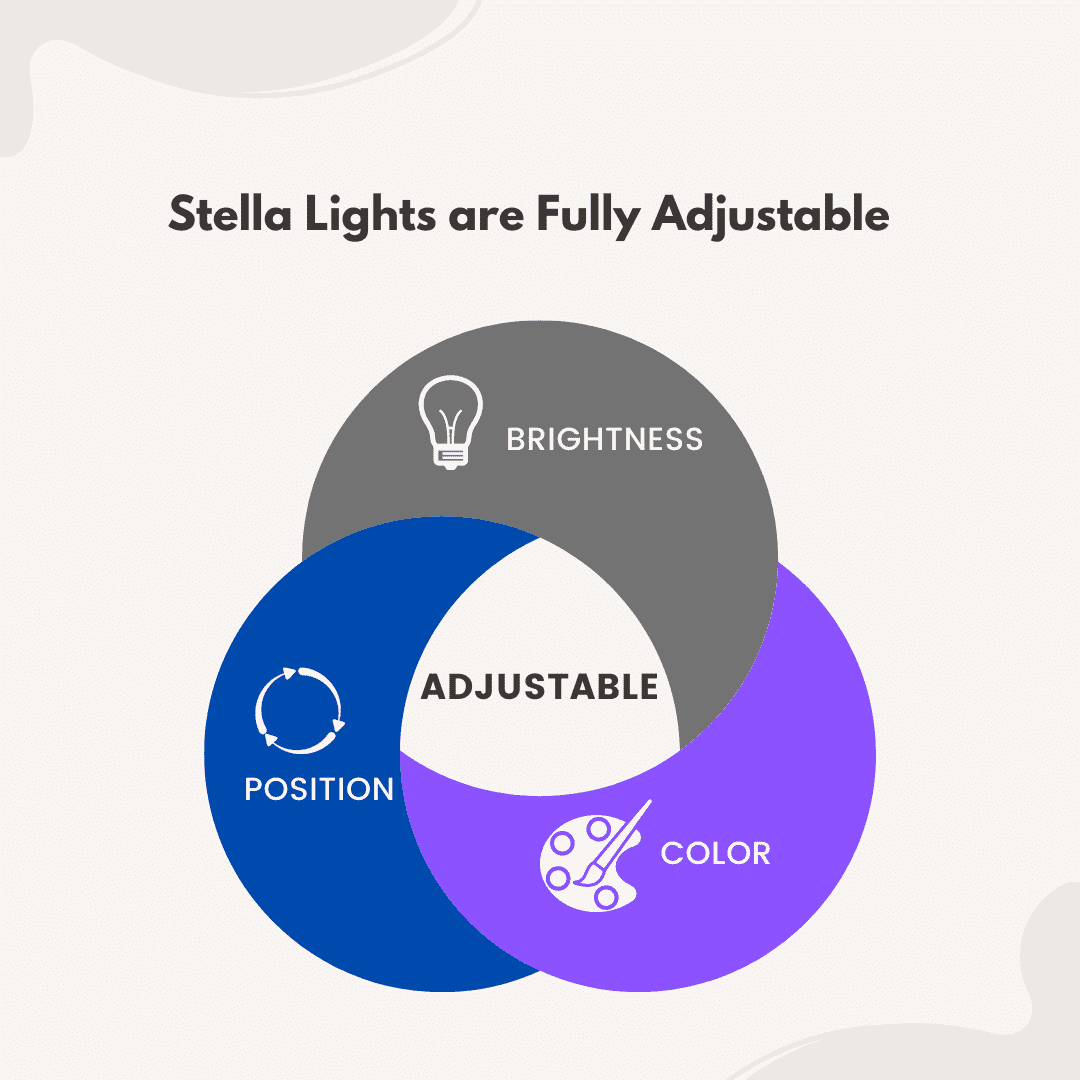
Brightness
Dimming gives the user a range of brightness levels, depending on their task and any other available lighting in their environment (natural or artificial). Stella lights offer either 5 or 10 step dimming:
- 5-level dimming: Stella SKY TWO, Stella EDGE
- 10-level dimming: Stella GO, Stella TWO LED Task Lamp
Color
In addition to dimming, Tri-Spectrum technology lets the user switch easily between Warm White (2800K), Pure White (4500K), and Cool White (5500K), depending on their preference for the task at hand. To give you an idea, the images below show the Stella logo under each of the three color settings.
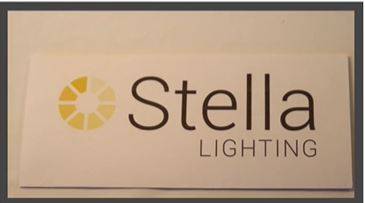
Warm White
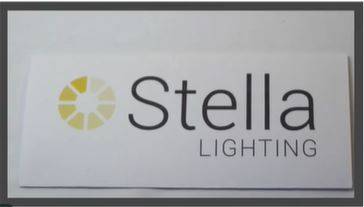
Pure White
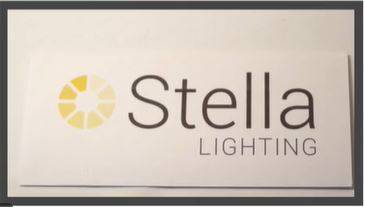
Cool White
Position
Combined with adjustable lighting, a Stella light’s flexible, segmented steel neck can be positioned in virtually any direction to shine light precisely where it is needed most.
Quality construction
Stella lamps are built to last, with high end parts including injected silicone, injected molded plastic, and segmented steel. And unlike traditional light bulbs, LEDs do not have a fragile filament, making them very durable. Stella’s task lamps, especially the GO and the EDGE, are designed to be moved easily and securely from place-to-place, ensuring high-quality task lighting no matter the location.
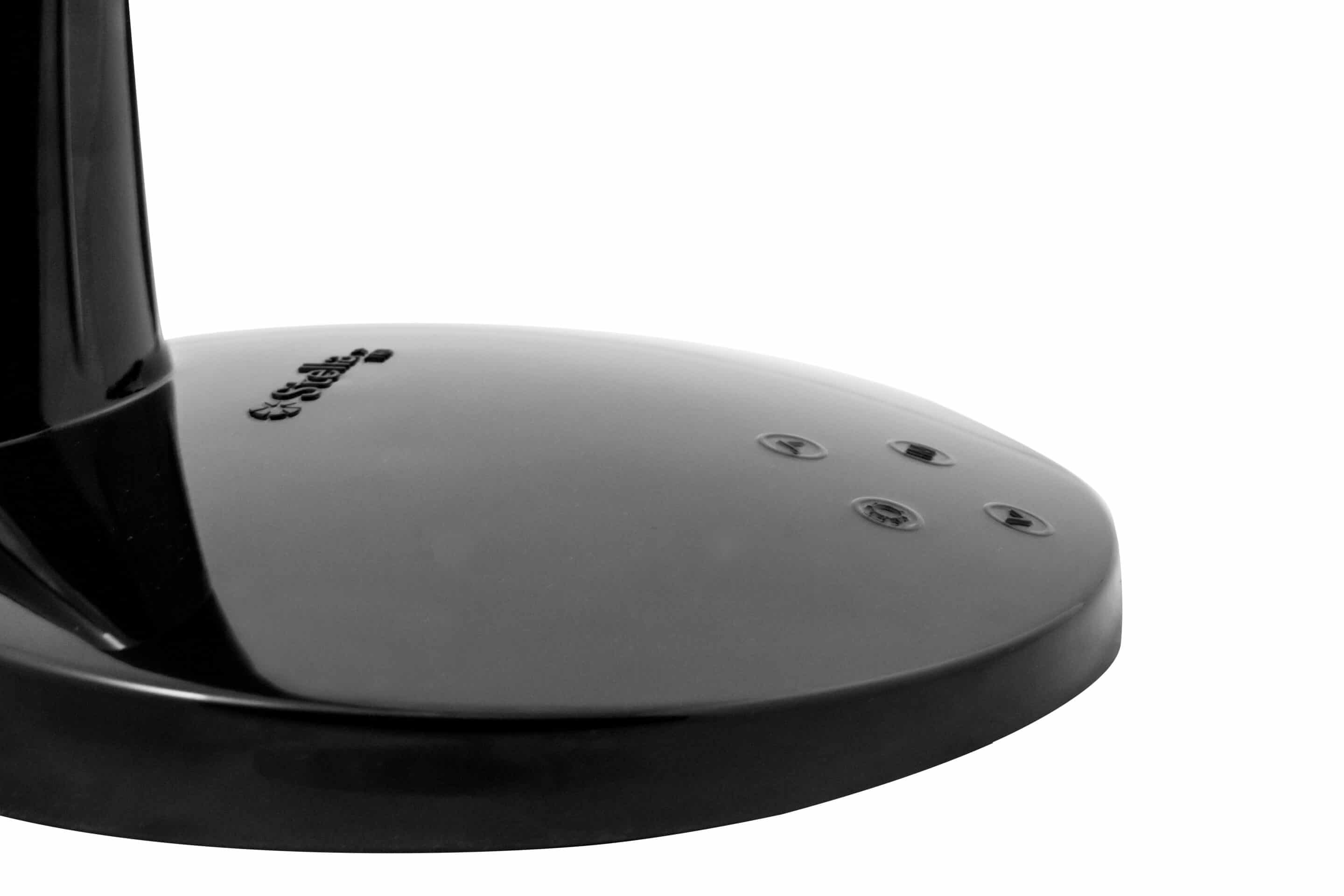

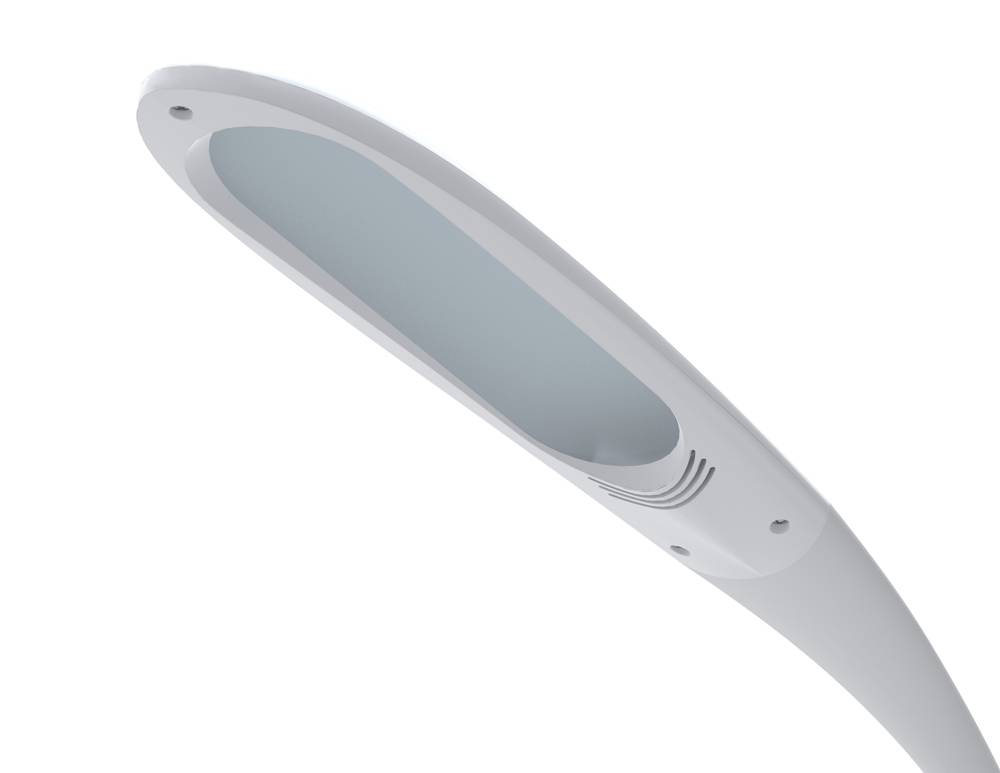



Unique, appealing design of a Stella light
Most Stella lamps come in 2 color options, black or white. They have a slim profile and a modern, elegant design suitable for most any room.
Warranty
All Stella lights come with a two-year repair & replacement manufacturer warranty.
What is the difference between LEDs and regular light bulbs?
Let’s break it down. If you visit the light bulb aisle of your local hardware store, you’re likely to see various bulb options. Two of the most popular are incandescent bulbs — the traditional kind of light bulb that has been around forever — and LED bulbs.
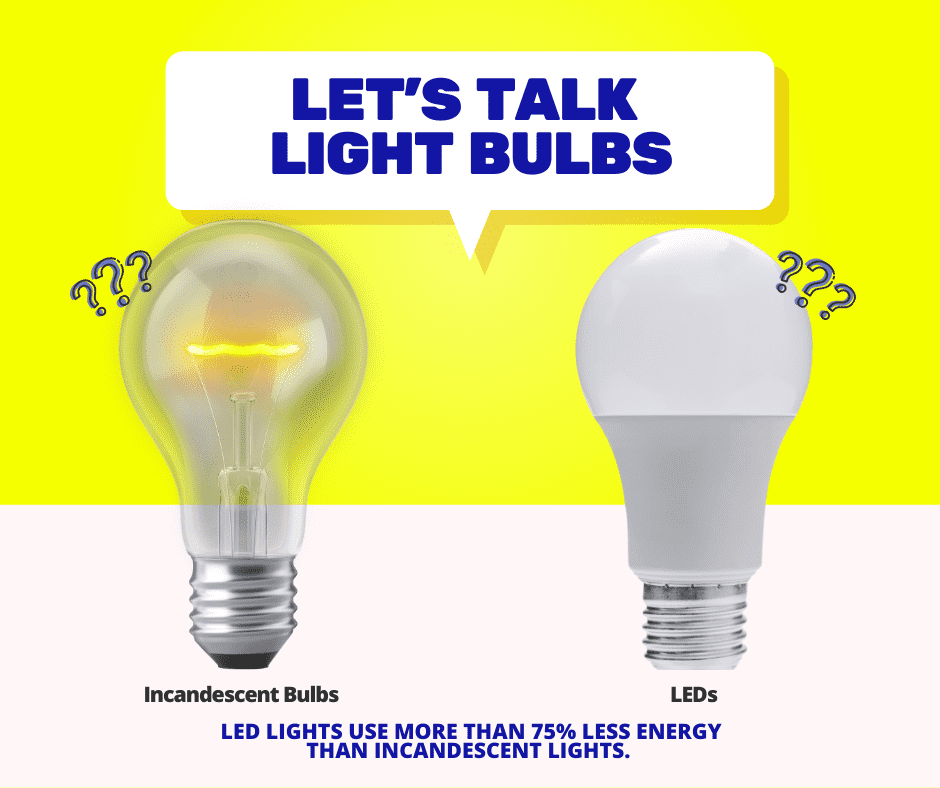
Unlike incandescent bulbs, LEDs are very energy-efficient and tend to last a long time, which is better for the environment AND better for your wallet.
A traditional (incandescent) light bulb has a filament that glows, producing both heat and light when energy travels through it. On the other hand, LEDs do not have filaments, and do not get hot. Instead, they have electrons that flow to create photons, which is the light that we can see.
The thing is, LEDs require a lot less energy to produce the same level of brightness as traditional bulbs, and they are very long-lasting. Ever turn on a lamp and suddenly notice the bulb burn out? That does not happen with LEDs; in fact, Stella lights do not require bulb changes. They last over 50,000 hours!
LED lights use more than 75% less energy than incandescent lights. Although the upfront cost of LED bulbs is typically higher than traditional bulbs, the energy savings in the long run more than makes up for the difference.
To put it in context, incandescent bulbs used in the home are commonly around 60 watts or more. Stella products have a wattage range from 10 to just 14 watts.
Stella Light vs. the competition
Ok, so there are real advantages of using LED bulbs, especially when it comes to energy consumption and efficiency. But there are also plenty of LED lamps on the market, including some at a much lower cost. Why do we think a Stella light is worth the investment?
Stella light brightness
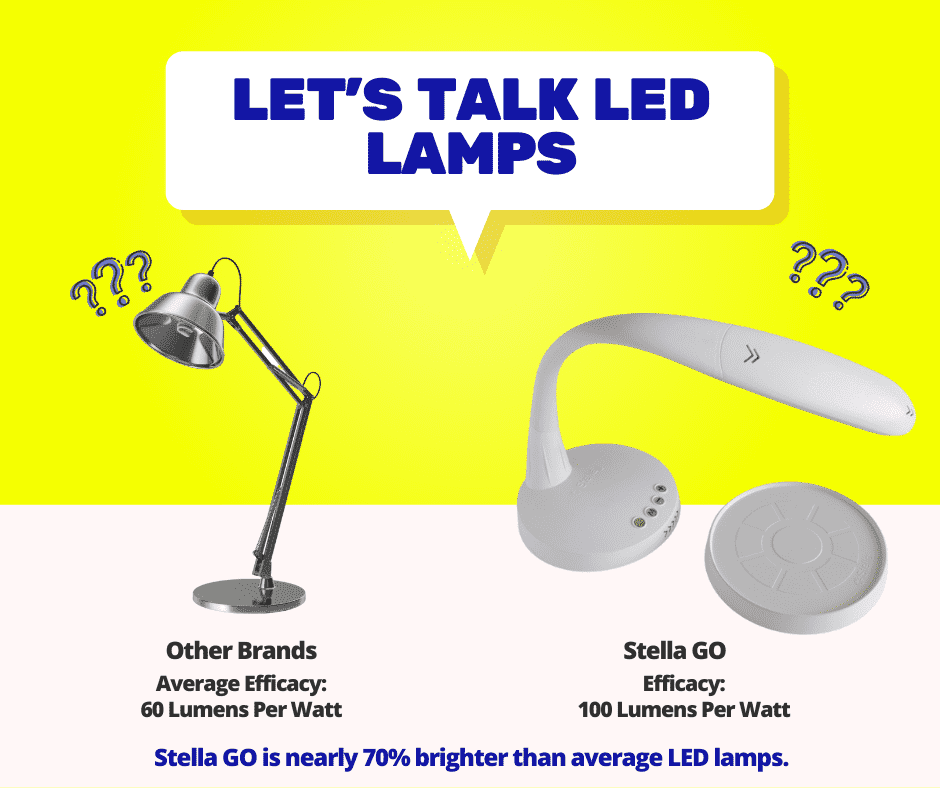
Light is measured in lumens, or the amount of light output from a light source. One way to compare different types of bulbs is by looking at their energy efficiency, or efficacy, which is measured in lumens per watt. The higher the number of lumens per watt, the brighter the light for the same amount of power.
Incandescent bulbs have an efficacy of 14. On average, LED lights have an efficacy of 60. Again, more lumens per watt translates to a brighter light with less energy usage. Notably, Stella GO’s LEDs have an efficacy of 100 lumens per watt, making them nearly 70% brighter than the average. Stella Lighting uses Philips Lumiled high performance LEDs, the brightest LEDs on the marketplace, in all of their lamps. These bright, high-quality lights make tasks easier on your eyes and reduce eye strain, ultimately leading to greater productivity.
Quality manufacturing
Stella has a demonstrated commitment to quality, standing behind their products with a 2-year repair & replacement warranty. What’s more, Stella Lighting is the proprietary designer and manufacturer of Stella Lamps, having acquired 16 patents for their uniquely-designed LED lamps.
The Stella philosophy is to design products in-house, based on direct feedback from people using Stella lamps on a daily basis. While Stella lights can be used for virtually any task, the company has focused through the years on meeting lighting needs in three key areas.
Education
The original Stella Lamp was designed for the classroom. Did you know that quality task lighting can have a significant impact on classroom learning? Studies have shown that good task lighting impacts vision, circadian rhythms, cognition and mood. A 1976 study by Ott revealed that full spectrum lighting had a positive learning impact on students with ADHD and learning disabilities.

Now, quality task lighting in the classroom is even easier and safer thanks to the cordless design of the Stella GO. The battery-powered GO lasts a full school day or longer on a single charge, can be moved to different locations around the classroom and eliminates concerns about students accidently tripping on cords. It is an essential element for shaping an inclusive learning environment for students with low vision.
Art
For creative arts lovers and crafters, Stella has become a household name. Stella serves a wide variety of creative arts industries including sewing/quilting, needle arts, fine art, paper crafts, jewelry making, illustrating, tattooing, you name it!
A Stella light illuminates finely detailed handwork, no matter the time of day or night. In particular, the versatility and mobility of the Stella GO and Stella EDGE provide lighting for every task, whether it’s seeing true colors, working at a sewing machine, cutting fabric, or pressing at an ironing board. Keep in mind that Stella outshines the competition with an efficacy of 100 lumens per watt — nearly 70% brighter than the average LED lamp.
Because the Stella light does not emit heat, it is comfortable and safe to study patterns or the fine details of a project under close lighting.
Another great feature of the Stella light is the ability to switch between 3 light temperatures (Warm, Pure, or Cool White), allowing artists to see true colors and compare projects and materials under varying temperatures.
Generally speaking, lighting has a significant impact on our environment, and a Stella light can enhance virtually any creative space.
Stella Light for Low Vision
If you are only using a ceiling light to illuminate your tasks, you’re only using about 12.5% of that light on your working area. A lack of task lighting can quickly lead to eye strain and discomfort. And for people with low vision, task lighting becomes even more critical in order to maximize remaining sight.
In prior blog posts, we have identified CONTROL as the most important factor in low vision task lighting. Every person’s vision is unique, and with vision loss often comes greater sensitivity to different types of bulbs, colors, and intensities. By carefully controlling their lighting environment, a person with low vision can actually enhance their remaining sight.
Text Version: The 5 Key Components of Home Lighting Control
A Stella light provides a customizable task lighting solution allowing low vision users to exercise control in these key areas:
-
- Angle/Position — With the flexible, segmented steel neck, you can position light where it is most needed. And, in comparison to traditional bulbs, LEDs are directional, meaning that they emit light in one direction rather than all around.
- Intensity — Using 5 and 10 step dimming, Stella lights can be adjusted depending on the task and the user’s preference.
- Color — LEDs emit clean, crisp light, increase contrast and clarity, and reduce glare. Stella’s tri-spectrum technology goes a step further in allowing the user to switch between 3 color temperatures, depending on what works best for their needs.
For maximum benefit, low vision lighting should be bright and uniform with no dim spots. Stella lights use high-quality diffusers that distribute light uniformly for optimal viewing.
Stella lamps are designed in every way with the low vision user in mind, with features including tactile, high-contrast, backlit controls. The Stella SKY TWO Floor Lamp has a raised-button remote control allowing the user to change its settings from anywhere in the room.

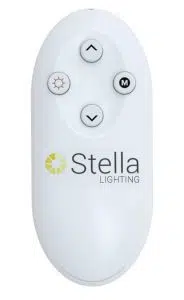
Since the lamps produce virtually no heat, they are comfortable and safe to use for extended periods, whether reading, writing, cooking, or getting chores done. And again, it bears repeating that Stella lights use the brightest LEDs on the market, providing the brightest and best task lighting for low vision.
Low vision product expert Sam Seavey recently created a video review of the Stella GO wireless desk lamp. In this review, Sam goes through each of the lamp’s features and describes how he uses it for daily tasks.
Final thoughts on Stella lights
We hope this post helps draw attention to the importance of task lighting and why we feel that Stella lights are the ultimate solution. Stella’s quality craftsmanship, combined with their choice to use the brightest LEDs with customizable controls, result in a standout product in the lighting industry.
Because we believe so strongly in the Stella brand, we strive to offer the best prices on Stella lamps. For quick reference, here are our current sale prices:
- Stella GO —
$349.00$297.00 - Stella TWO —
$249.00$199.00 - Stella EDGE —
$199.00$169.00 - Stella SKY —
$439.00$385.00
If you have questions about Stella or about lighting in general, please feel free to drop us a line. We also offer free virtual lighting consultations, in which we provide personalized lighting recommendations to people with low vision.
Time and again, we have seen quality task lighting make a huge difference in a person’s quality of life. We hope it does the same for you.
Last updated 8/21/23.
Author Information
By Bethany Wyshak. Reviewed by Stuart Flom.
Sources
About. (n.d.). Stella Lighting. Retrieved December 21, 2021, from https://stellalighting.com/about/
LED vs. regular lightbulbs: Do they really make a difference? (2020, March 16). Arcadia. Retrieved December 21, 2021, from https://blog.arcadia.com/led-vs-regular-lightbulbs-do-they-really-make-a-difference/
Mott, M. S., Robinson, D. H., Walden, A., Burnette, J., & Rutherford, A. S. (2012). Illuminating the Effects of Dynamic Lighting on Student Learning. SAGE Open, 2(2), 215824401244558. https://doi.org/10.1177/2158244012445585
Sitler’s LED Supplies. (2020, June 10). 4 Ways To Tell Quality LEDs From Cheap LEDs | Sitler’s LED Supplies. Retrieved December 21, 2021, from https://sitlersledsupplies.com/4-ways-tell-quality-led-cheap-led/

